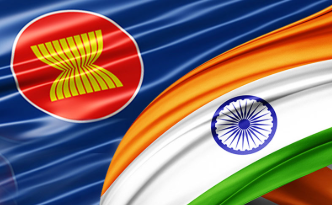ASEAN-India Free Trade Agreement (AIFTA) Review
The ASEAN-India Free Trade Agreement (AIFTA) was initiated in 2010, which aimed to enhance trade in goods and services. After 15 years, a review is necessary to assess its effectiveness. India has experienced a growing trade deficit with ASEAN countries, which imbalance stems from unequal duty preferences and market access.
Key Issues with AIFTA
India granted more benefits to ASEAN countries than it received. Indian import duties were higher compared to those of ASEAN, which allowed ASEAN exporters easier access to Indian markets. India also reduced tariffs more rapidly than anticipated, which offered ASEAN companies immediate market access without reciprocal benefits for Indian firms.
Tariff Reduction Disparities
India’s tariff reduction was inconsistent across ASEAN nations. The CLMV group (Cambodia, Laos, Myanmar, Vietnam) received extended timelines. This preferential treatment strengthened their competitive position in India. Consequently, India faced a larger trade deficit, particularly with Vietnam.
ASEAN countries have robust manufacturing networks, which gives them edge over India. Indian manufacturers encounter barriers in sectors like two-wheelers. To compete, they often need to establish operations in ASEAN nations.
Impact of RCEP
The Regional Comprehensive Economic Partnership (RCEP) has intensified competition. It further integrated ASEAN with China. Investment shifts from India to ASEAN have occurred, particularly in electronics and machinery.
Trade Evasion Tactics
Some industries exploit the FTA to circumvent Indian regulations. For instance, cheaper Chinese steel is routed through ASEAN to avoid tariffs. This practice negatively impacts India’s steel sector. Similarly, raw gold is processed in ASEAN before being exported to India at reduced duties.
Future Recommendations
India should renegotiate AIFTA to address these imbalances. Employing game theory could help achieve fair negotiations. India must advocate for improved market access in key sectors. Strengthening initiatives like “Make-in-India” is vital. Creating an investor-friendly environment is also essential. Revising the FTA with stricter rules of origin will help ensure equitable market access.
Important Facts for Exams:
- AIFTA: The ASEAN-India Free Trade Agreement was launched in 2010. It aimed to enhance trade between India and ASEAN countries. However, it has led to a growing trade deficit for India.
- CLMV: The CLMV group includes Cambodia, Laos, Myanmar, and Vietnam. They received preferential treatment in tariff reductions. This has given them a competitive edge in the Indian market.
- RCEP: The Regional Comprehensive Economic Partnership integrates ASEAN with China. It has intensified competition for India. Many companies shifted investments to ASEAN, affecting India’s electronics and machinery sectors.
- Make-in-India: This initiative aims to strengthen India’s manufacturing sector. It focuses on attracting investment in key industries. Enhancing competitiveness is crucial for India’s economic growth and trade balance.
Month: Current Affairs - November, 2024
Category: Economy & Banking Current Affairs


